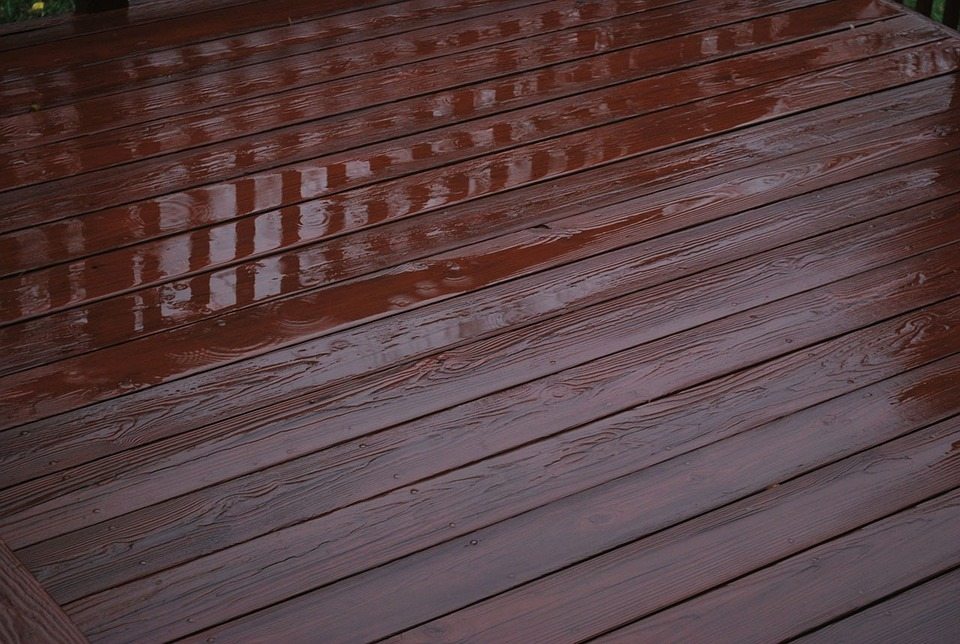When is the Best Time to Stain Your Deck?
It is very important to take care of your deck, helping it withstand the harshness of the elements, the obstacles which Mother Nature puts in its way. The wind and rain, snow and sun can all damage your deck, making it look worn and old. Staining it is a great way to renew your deck’s appearance, helping it remain in top condition in the long run.
When to Stain your Deck
The weather and time, these are the two elements that you have to have working for you together in order to effectively stain your deck. The amount of time it will take up depends on how big the deck is. You will want to set aside a minimum of two days, including drying time. If your deck needs to be power washed, or if the boards on the deck need replacing, you may want to set aside another extra couple of days. Be sure to have all of your supplies ready well ahead of time. In this way you will save time in the bigger picture. It’s better to be prepared in advance rather than realizing at the last minute that you need to rush to a store to purchase essential supplies.
The Weather
A lot of people don’t know this, but summer and early spring are not the ideal times for the application of stain to your deck. Many people do stain their decks in these seasons, not realizing that it’s amongst the worst times possible. The reason for this is that humidity is absorbed by the wood in these seasons, whereas it is best receptive to new stain treatments when it is dry. If you stain your deck too soon, in the spring season, it may result in cracking and peeling, the wood pores saturating, making it extremely difficult for them to take in the treatment. The summer month is problematic for another reason; in summer, the temperature, being high, may result in the stain evaporating far too quickly, preventing the coating from effectively penetrating the wood; the stain will dry before it has a chance to be absorbed into the wood.
You want to apply the stain when the wood surface and air are in the temperature range of 50° – 90°F. You also want to avoid the direct application of sunlight. Lastly, do not apply a stain if there is a forecast of rain in the following one to two days, or all your hard work could end up being washed away. You want to pick a day that’s warm without being too hot, when humidity is low, without there being any rain on the way, and you will have picked the perfect day to stain your deck. You are likely to find such days in either late spring or early to mid-autumn.
How to Test the Wood to See if it Needs Staining Yet
The easiest way of testing your wood to see if it needs to be stained is by sprinkling some water on your deck. If the water is absorbed immediately, it means that the wood is ready for staining. If, however, the water instead beads up, standing on the deck, it means that the deck doesn’t need to be stained as yet. Unless your just trying to improve the overall appearance .
How to Stain Your Deck with One TIME® Stain.
First, check for rotting, cracked or loose boards, replacing them where you need to. Mildew, mold, algae, dirt and oil can make your deck dirty. Therefore, next you need to clean your deck before you can stain it, using the deck cleaner of your choice.
First, thoroughly wet your deck using a hose. Once it is uniformly wet, dilute your deck cleaner, scrubbing it into the grains of your deck. Let it sit for about 10 to 20 minutes. After this, wash it again with the hose.
Next, you have to decide what kind of stain you want to use. There are oil-based ones and water-based ones available on the market. Oil-based stains take a longer time to dry and need more recoating more frequently. Some water-based stains last longer, dry faster, are washable with water and have less pronounced odors. Stains are designed to resist mildew, repel water and prevent damage resulting from UV rays.
Make sure that you use a high-quality brush when applying the stain to your deck. Do not apply when the sun shines brightly. Stir the can in scooping motions to ensure getting a clean and consistent color on your coats. Use a paintbrush for smaller, difficult to reach areas.

